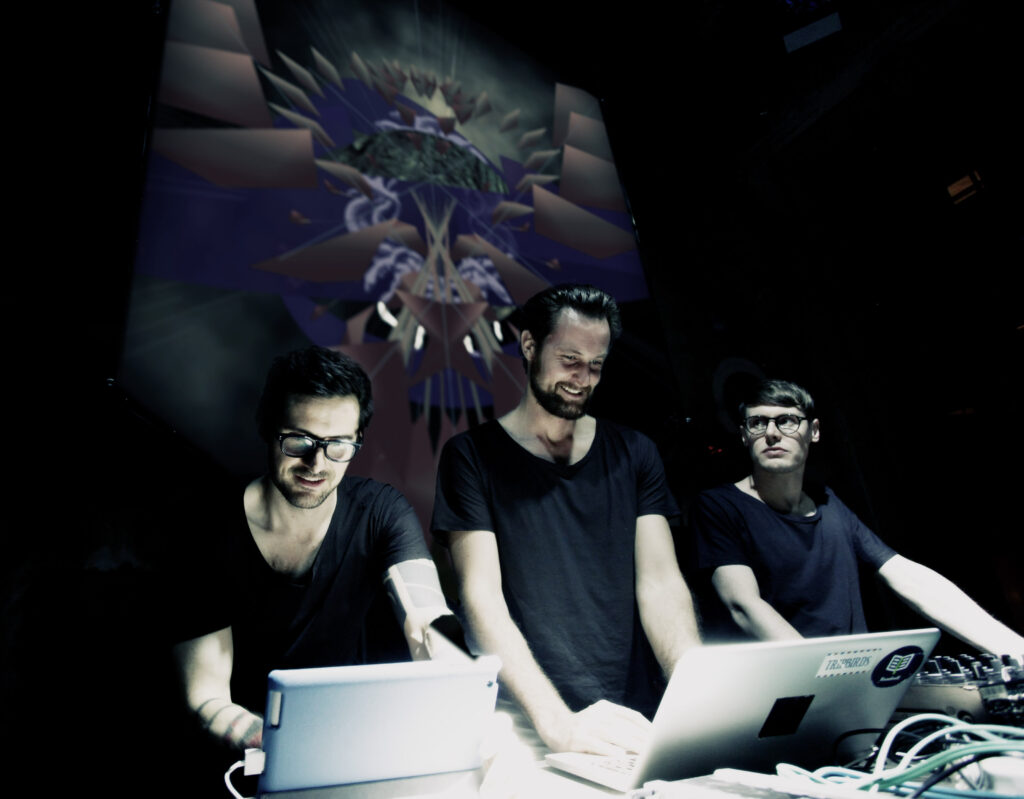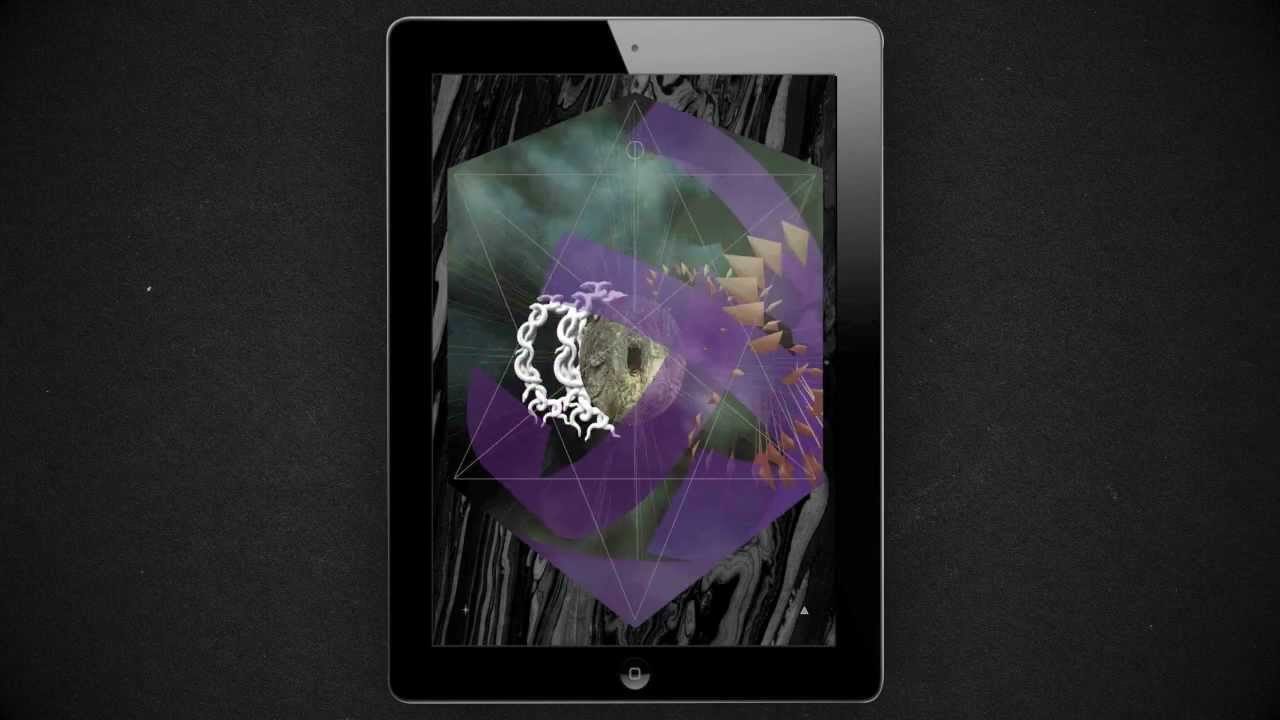It is safe to say that many people in the early 21st Century now consider themselves to be living at the dawn of a new post-religious age. There has been a very public fight to seek to define what the role of the Christian church should be over the coming years, from the Church establishment themselves to influential modern thinkers such as John Gray, Richard Dawkins and Christopher Hitchens to straight up fantasists like Alain de Botton. It seems that only now are people starting to apply themselves to the much more open ended question of what should happen to traditional devotional music and art. Working on this much more intuitive, less philosophically and dogmatically divisive, subject are the unlikely team of an agnostic Swedish electronic music producer, a graphic designer from Vienna and a CGI artist from Germany.
The team have hinted at one fascinating potential future by making a stunning app for the iPad called Ecclesia which combines breath-taking electronic music created almost entirely from sounds recorded during church services with intuitive, respectful album art that the user can ascend through on their iPad as they experience the music.
In 2003 the Swedish born electronica artist Eric Wahlforss (also a founder of Soundcloud) released a well-received album of down tempo electronic music called Soulhack under the name Forss before delving into the world of remixing and playing live. But despite making ripples in the continental club scene he found his heart simply wasn’t in it and he hung up his headphones and laptop for a few years looking for new challenges. But in 2008 he realised that he still had a musical itch – however simply playing electronic music wasn’t going to scratch it.
He knew that as he was growing out of dance music, his childhood love for the ecclesiastical music of church organs and choirs was growing stronger: “I’ve always had strong connections to church music and my mother conducts a choir in Sweden. Neither of us is religious but we both love the music. One of my earliest memories is being in church sitting on a wooden pew, watching my mother practice with her choir. Even back then I knew something about this music was magical.”
Once he had the idea in his head, it was hard to shake: how would you recreate the essence of what a church is via the medium of secular electronic music? While attending ecclesiastical concerts he started recording snippets on his phone to see if he could assemble music from the parts, even if just as a challenge to himself. He admits that the experiment was only partially successful: “Most of the things that I did came out crap but a few things stuck so I just continued and over the last three years I went to different concerts in churches and recorded them. Then I cut out very small parts – fragments – and made music with them.”
He adds: “To me there is something magical about choir music in particular. It is untouchable – a higher art form that I have never been able to practice myself. It has a very strong emotional impact on me in general. It is the music I regard the highest.”
There were two sources of raw material. The first, which made up the main palette of sound, consisted of recordings of strings, choirs and organ played during church concerts as well as ambient noise created by the congregants. These were then cut up into tiny fragments and rearranged into a fabulous new mosaic of celestial noise; at once beautifully familiar yet still disconcertingly unusual. The second was the sample bank of noises made by wooden, stone and metal objects recorded in church to make up beats and percussion. These were the plosive, rhythmical noises that would provide the link to modern electronica.”
A church with an organ inside it is basically the biggest instrument in the world. The large stone room it sits in simply acts to amplify the glorious music that it makes. Eric Wahlforss wanted to take this idea to its logical conclusion making music from every aspect of the place of worship. Not just out of fragments of what we traditionally think of as spiritual music but out of the entire experience of being in a place of worship, which is why he taped and processed not just the music but also the sound of congregants coughing, of footsteps echoing and of chairs scraping across stone flags as well as the clangourous peal of bells calling the faithful to mass.
He adds: “I did the record for two reasons. The first is that I wanted to make music that had very simple sources: organ, choir and strings and then the percussion but the second is that it is a challenge for me as a producer. I’ve been a producer for fifteen years now and even by 2003 I was into this intricate sequencing procedure. I was into drum and bass and sampling from crazy sources. Back then I was influenced by people like Photek and DJ Shadow, heavily sampled electronic music. The paradox is exactly the thing. I really tried hard to combine those two things that didn’t sound cheesy like Enigma or some new age house music. This turned out to be a really hard thing to do and I failed many times. I ended up producing 50 tracks in total and only eight made it onto the album as well as an intro and an interlude. That was the challenge. But these are the things that I love the most, church music and people like Burial and Aphex Twin. I wanted to cut through the bullshit and just combine the things that I really loved the most.”
Eric is not only aware that there is a great paradox at the heart of the album he’s created but he relishes in it. On one hand, church music is some of the oldest in Europe, while the form he is making it into, electronica, couldn’t be more modern.
The duality of the project: modern combined with ancient; religious combined with secular; digital combined with analogue; processed music combined with field recordings, is reflected in the aesthetically wonderful multimedia iPad application that makes up the main Ecclesia release. Eric explains that when he first started thinking about releasing the music it coincided with the launch of the iPad (“a very magical, intuitive, elegant thing”) and the opportunity that presented itself was too much to ignore.
He teamed up with two digital artists Leo Lass of the Viennese graphics team Depart and CGI artist Marcel Schobel who also launched developer/publisher Untouch.fm to bring the project to life as an app. They were clear on what it shouldn’t be as well as what it should be: “We had to say no to a lot of things.
Many apps have been cheap and they don’t really contribute to the art, they just destroy and defocus it or they end up resembling a computer game. Leo and Marcel have helped create similar ritual multimedia performances in the past, so it was a very good fit when I found these two guys. That was one and a half years ago when I first met them. And we’ve been working on it hard for the last eight months.”
When the app is fired up the user is drawn into a digital world of sculptures and scenes which can be travelled through and around, with the journey having subtle effects on the music and vice versa. Eric says: “Each track has its own sculpture that you enter into and you can simply swipe between them as you ascend towards the heavens, as it were.”
Too often apps detract from the actual music but many long hours have been spent making this a fully immersive, sympathetic and unique experience by Leo and Marcel. Speaking about the project, they said: “Whereas traditional album artwork has lost its significance due to the overwhelming success of digital music and portable devices, music apps have opened a whole new door for visuals accompanying audio releases. The Ecclesia project combines the intriguing aspects of audio-reactive visual content and a strong atmospheric audio release within an emotional application. The deep and voluminous sound is visually transformed into an abstract meta-structure that might resemble an actual building/ sculpture vaguely familiar and yet mystically strange. The idea of a cathedral as a physical architectural body is fragmented and invites the user to step inside and to explore the structure.”
Welcome to their songs and scenes of praise.
The Ecclesia iPad app is available now



